East Neuk Festival 2021 / Benjamin Baker, Fidelio Orchestra Café review – singing in the rain | reviews, news & interviews
East Neuk Festival 2021 / Benjamin Baker, Fidelio Orchestra Café review – singing in the rain
East Neuk Festival 2021 / Benjamin Baker, Fidelio Orchestra Café review – singing in the rain
Superlative visitors take us from Kurtág shocks to a stunning Fanny Mendelssohn quartet
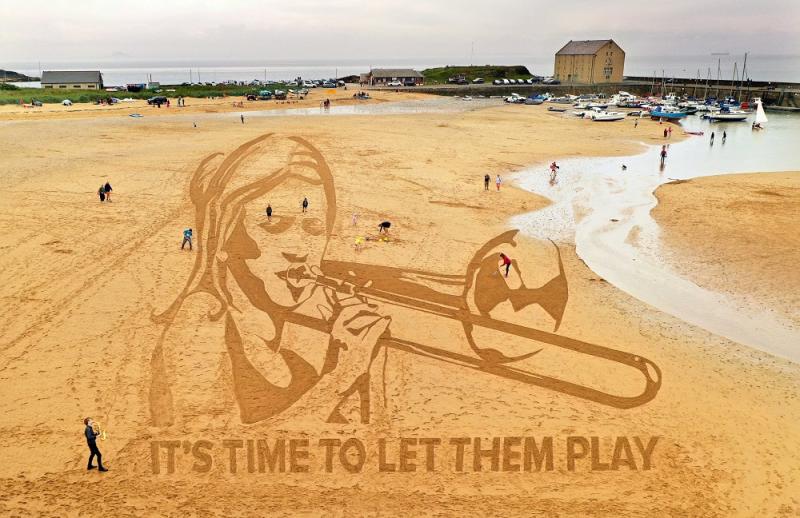
The heading may be a bit misleading.
Supremacy in performance was a given; violinist Benjamin Baker, guitarist in a million Sean Shibe and the Castalians, unsurpassable among young quartets, are already-great artists I first heard here in the ‘nook’ of Fife on the east coast of Scotland. Oddly enough, it was the most celebrated star, Paul Lewis (pictured below at the festival by David Behrens), who fell just a little short – for me, at any rate – in his interpretation of Musorgsky’s Pictures at an Exhibition: too rushed, the end of “Gnomus” very approximate, though that was the only technical glitch in an assured technique which captured the full thunder of the more grandiose paintings (the Polish ox-cart, the Knights’ Gate at Kiev). Lewis had his own ideas about characterisation, too. And the segue from the mystic Scriabin of the Op. 74 Preludes was magical. I can well understand the fuller tone Lewis wanted in Mozart’s famous A major Sonata, K331, but the resonant Bowhouse space – almost impossible, I was told, during rehearsal when there’s no audience to help soak up the sound – isn’t the best for piano; the middle register hurt these sensitive ears. 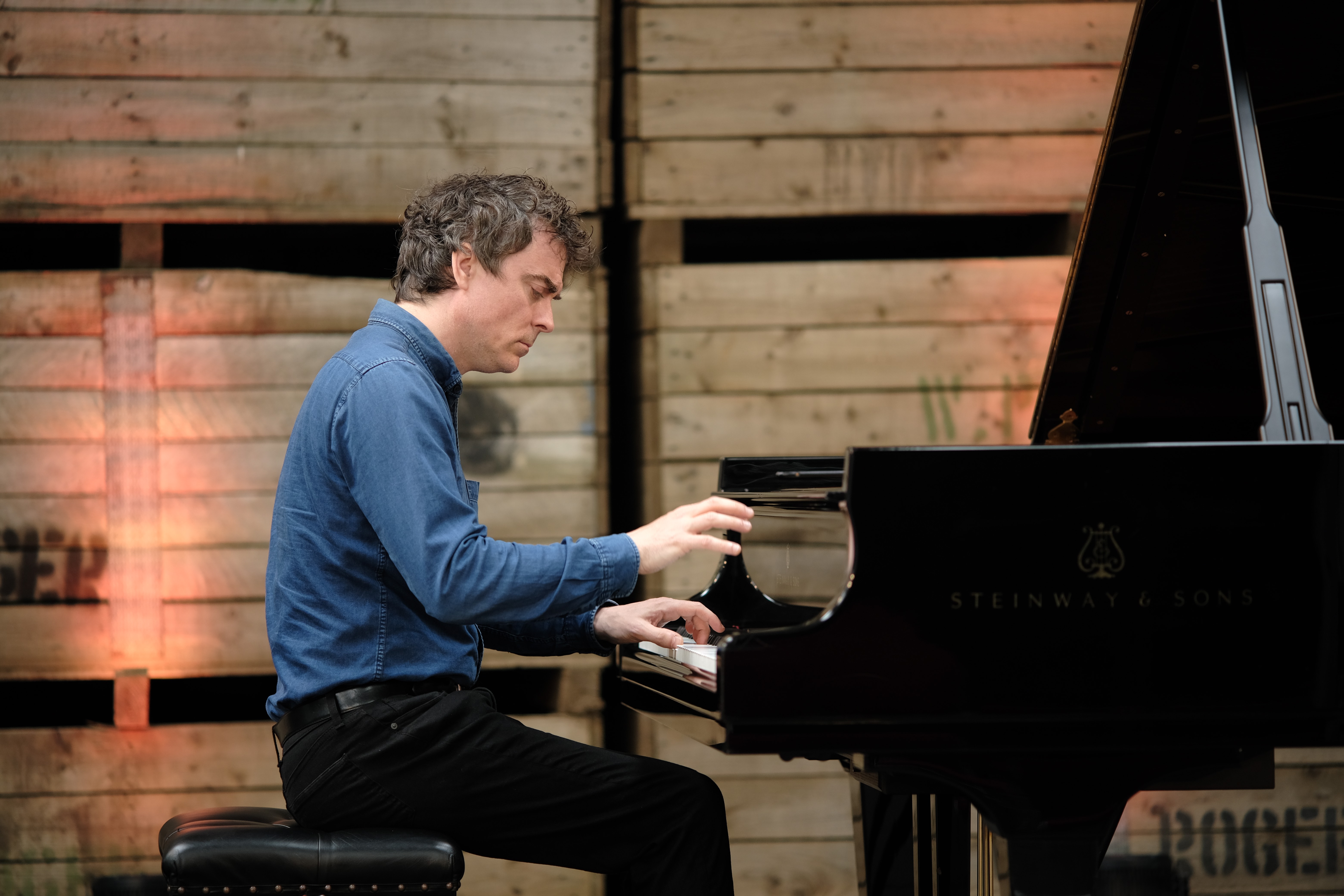 The Bowhouse, though, was the only option for live events this year, and for Scots there was massive cause for thanksgiving: apart from the very rare outdoor event, like Scottish Opera’s La bohème on a company parking lot in Glasgow, they’ve had nothing like the intermittent live glories we’ve enjoyed south of the border. Festival director Svend McEwan Brown has enriched the live events with films made not only in the Bowhous but also in the best-loved venues, chiefly the churches in Crail and Kilrenny, and the roster of artists is increased thereby (those we didn't get to see live are oud player Rihab Azar, The Tallis Scholars, pianist Llŷr Williams and three other guitarists joining Shibe in quartet). One of the performers told me that, in the face of last year’s cancellations, Brown was the only one to honour the original agreement, while bigger festivals all told him to go whistle and live on air, while others asked for free online content.
The Bowhouse, though, was the only option for live events this year, and for Scots there was massive cause for thanksgiving: apart from the very rare outdoor event, like Scottish Opera’s La bohème on a company parking lot in Glasgow, they’ve had nothing like the intermittent live glories we’ve enjoyed south of the border. Festival director Svend McEwan Brown has enriched the live events with films made not only in the Bowhous but also in the best-loved venues, chiefly the churches in Crail and Kilrenny, and the roster of artists is increased thereby (those we didn't get to see live are oud player Rihab Azar, The Tallis Scholars, pianist Llŷr Williams and three other guitarists joining Shibe in quartet). One of the performers told me that, in the face of last year’s cancellations, Brown was the only one to honour the original agreement, while bigger festivals all told him to go whistle and live on air, while others asked for free online content.
A decision to take the train back as well as up – no flying when possible to avoid right now - meant I had to forego Lewis’s second recital, the last of the seven live events. But it was good to begin and end in an almost shocking flamboyance. Who would have thought that Fanny Mendelssohn’s E flat Quartet could have quite such an impact? But more of that anon; back to the start first. The East Neuk regulars – and it was a real shame that not more people could be accommodated, with a huge waiting list for returns – aren’t as shockable as they look, so Kurtág’s "Hommage à Tchaikovsky", the spread-palms, fortissimo parody of that composer’s most famous opening, to the First Piano Concerto which began Samson Tsoy’s selection from the Hungarian’s “pedagogical performance pieces” Játékok (Games), probably didn’t daunt (how Kurtag notates the piece pictured below). Still, it was a brilliant opening gambit from Samson Tsoy, I presume with Brown’s full approval. Calm and minimalism briefly restored in a memorial and a calmer homage (to Schubert), we were soon off on another rollercoaster ride, or rather a scary surfing, in "Perpetuum mobile", imaging in the minds of many the grandest of waves on the North Sea several hundred metres away.  Tsoy’s brilliant programming, a genius he shares with partner Pavel Kolesnikov, often involves daring segues. On this occasion we went straight from the last selected Kurtág homage into the last of the three piano sonatas Schubert composed in the last year of his life (he died aged only 31; Kurtág is thankfully still with us at 95). It’s the first time Tsoy has performed the mighty B flat major Sonata in public; most recent memories of great interpretations include his and Kolesnikov’s friend and mentor Elisabeth Leonskaja playing it at their second Ragged Music Festival and Christian Zacharias at an earlier East Neuk Festival. He would have been here again this year, had Covid circumstances not prevented; Leonskaja is addicted to the place too, swimming whatever the weather (same here – two blissful morning dips at Pittenweem’s tidal pool set me up for the day).
Tsoy’s brilliant programming, a genius he shares with partner Pavel Kolesnikov, often involves daring segues. On this occasion we went straight from the last selected Kurtág homage into the last of the three piano sonatas Schubert composed in the last year of his life (he died aged only 31; Kurtág is thankfully still with us at 95). It’s the first time Tsoy has performed the mighty B flat major Sonata in public; most recent memories of great interpretations include his and Kolesnikov’s friend and mentor Elisabeth Leonskaja playing it at their second Ragged Music Festival and Christian Zacharias at an earlier East Neuk Festival. He would have been here again this year, had Covid circumstances not prevented; Leonskaja is addicted to the place too, swimming whatever the weather (same here – two blissful morning dips at Pittenweem’s tidal pool set me up for the day).
Tsoy’s take was utterly original, raging against the dying of the light as early as the first-movement exposition’s climax, restless rather than serene throughout it (the big repeat was included, of course – black marks for anyone who doesn’t offer it). The saddest and ultimately the most gently radiant of all Andantes, though, had the transcendental-meditation quality it needed, very much in the Richter-Leonskaja line, and the last two movements were made light of, even though death pops the persistent question in the finale. For those who feel Schubert leaves the reflection behind too readily, Tsoy (pictured below at the back of the Bowhouse) found the perfect encore: the Sarabande from Bach’s C minor Partita. 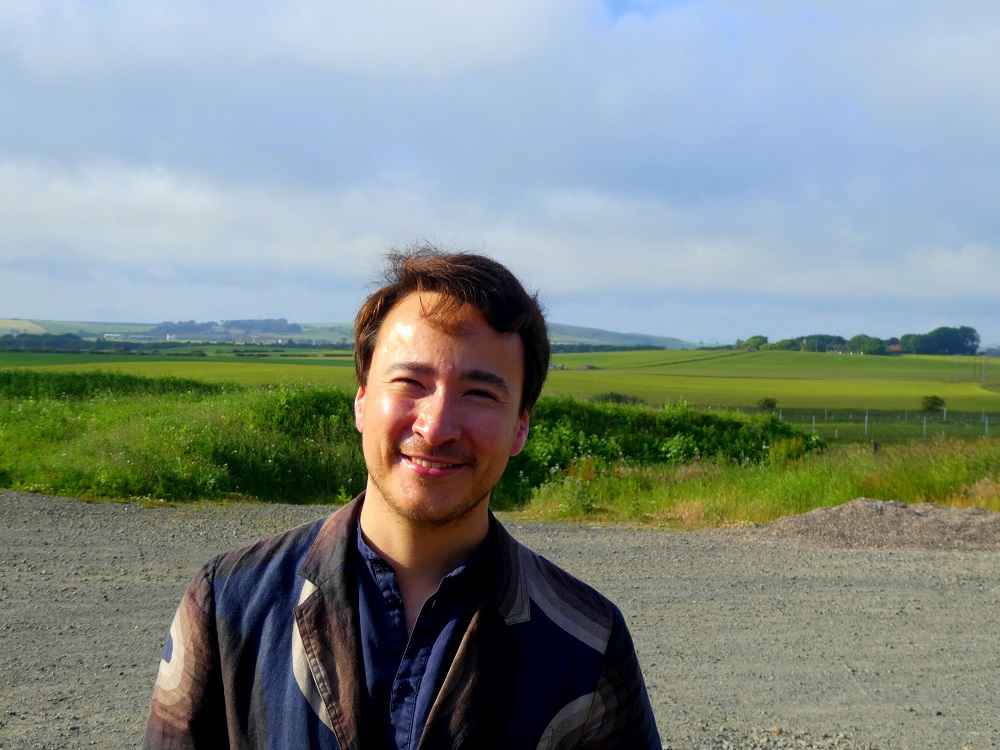
Saturday was epic. The morning concert featured the fruits of two East Neuk regulars’ intermittent residency, the original minds of Baker and Shibe meeting in Arvo Pärt’s Fratres (brothers indeed), Falla’s Seven Popular Spanish Songs and Bartok’s Romanian Dances; how spellbinding the equality of the two in the superb Falla transcription. But I’ve also come to respect over the years the first-rate pianism of Baker’s regular duo partner, Daniel Lebhardt. He featured more extensively in a BBC Radio 3 concert conducted by another regular collaborator, Jonathan Bloxham, where we heard a movement from Matthew Kaner’s Five Highland Scenes, premiered in their entirety at the Bowhouse. More airborne fantasy here, with radiant sounds from Baker, but a bit of trimming wouldn’t go amiss given the rhapsodic style (pictured below: Kaner and Shibe in the Bowhouse courtyard during a bitterly cold afternoon interlude with music and dance from the two UK based members of the Ghanaian group Akrowa as well as clarinettist Dick Lee and banjo player Phil Adams to keep us warm). 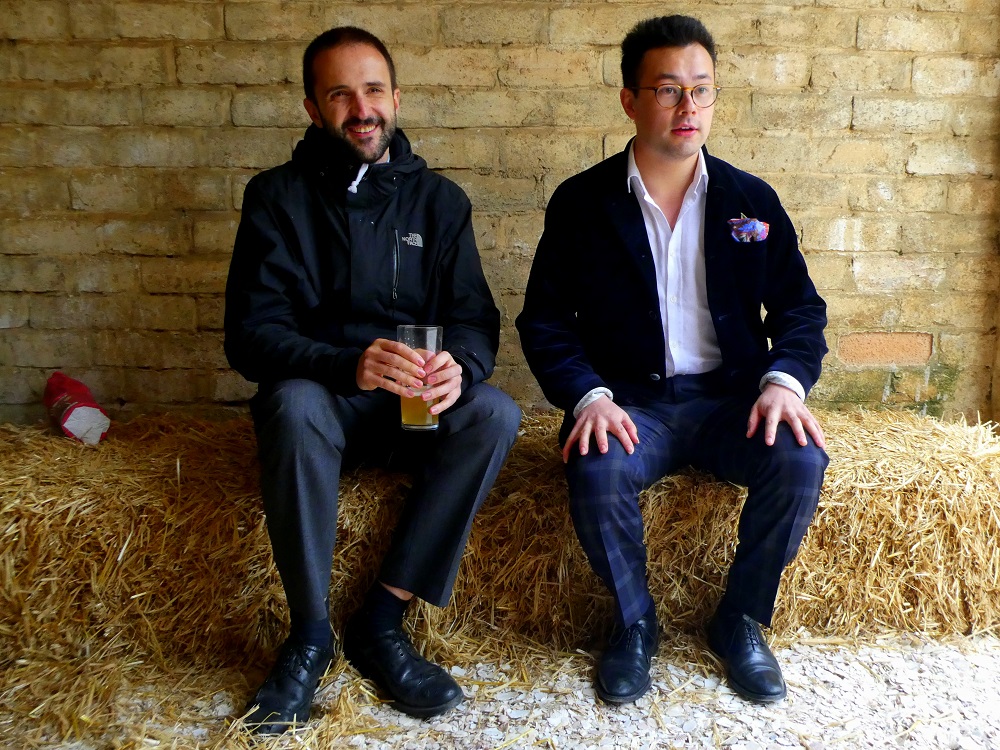
Strings work best in the reverberant Bowhouse acoustic, and there was never at any moment a single doubt about the expressive intent of the Castalian String Quartet, with its first violinist, the outstanding Sini Simonen, sending phrases up into the air and almost leaving them there before catching them on the way down. Beethoven’s early D major Quartet came out newly-minted - fresh, playful, original – but the first revelation of the festival, for me, was to hear Dvořák’s last quartet, Op. 105 in A flat, for the first time live. Where has this masterpiece been all my life? So rich in melodies and questionings with original turns of harmony and phrase, its wisdom struck deep. 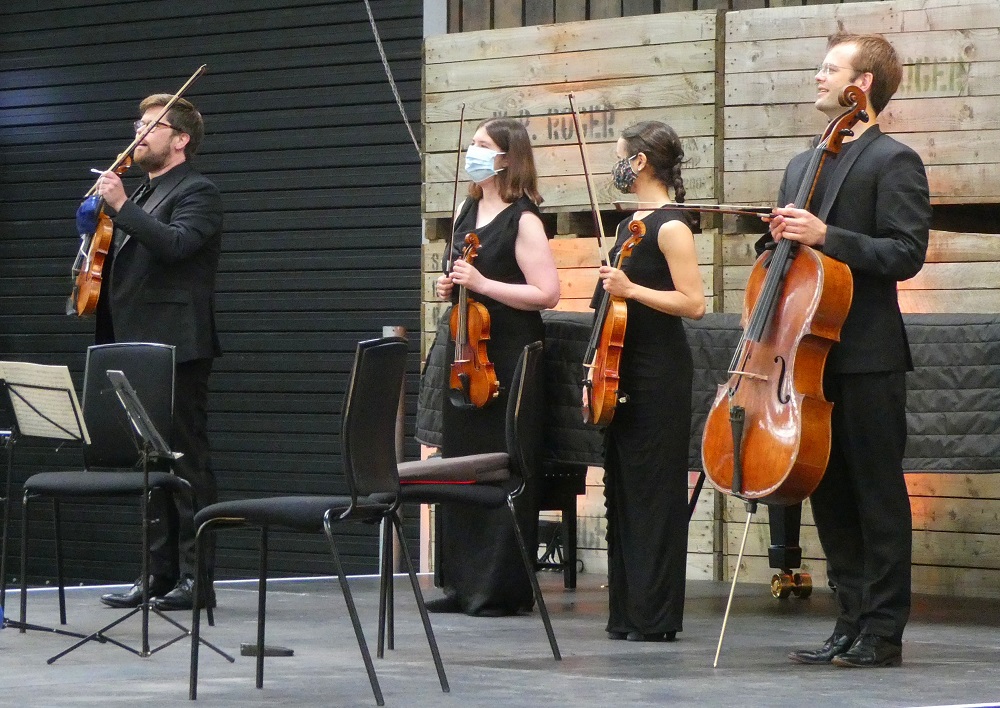
Not a bit of it. Dazzlingly rich and inventive, it ended with nailbiting virtuosity in an absolutely spectacular finale, sending us out treading air. It becomes ever more evident to me that while Clara Schumann was a major talent, Fanny Mendelssohn turns out to be the one woman composer of the 19th century to deserve a place among the greats. All the more shame on father and brother for forbidding her to compose any more than she did. It’s a tough play, too; when I met the Castalians on the platform at Leuchars for the train back to London, and they told me cellist Christopher Graves had been just been for a dip while they ate fish and chips on the beach, I asked if his fingers hadn’t gone numb. Yes – but from playing the Fanny Mendelssohn Quartet, came the reply. Recording, please. 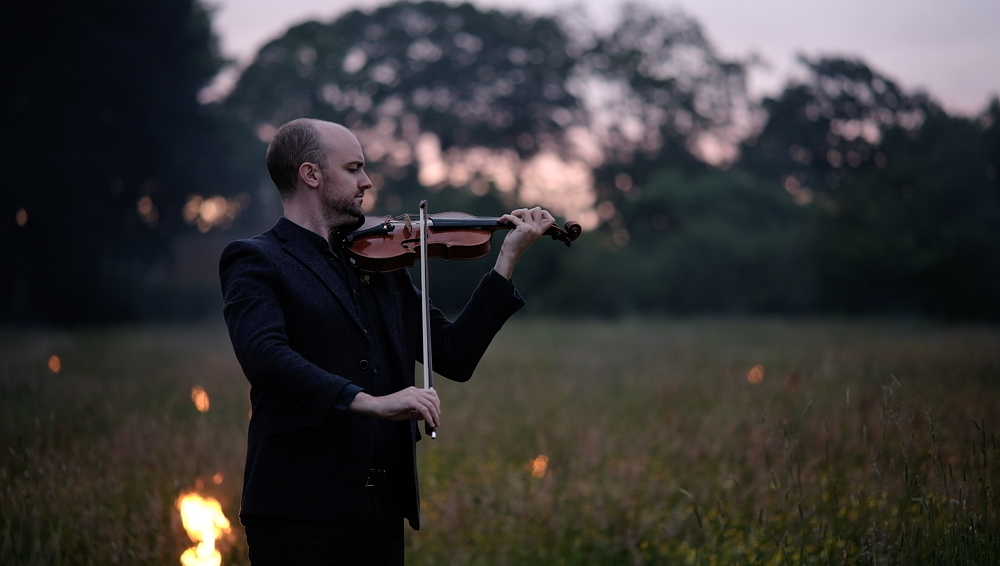 A happy footnote to the festival events came the following Saturday back at the Fidelio Orchestra Café in Farringdon, where Baker (pictured above playing in the Kellie Castle labyrinth) has become a regular fixture. Here he was trying out, over three nights, the “Bach plus” programmes he’d been preparing up in the East Neuk, and which he will play at next year’s festival. So I don’t feel so sore at hearing only the third of the programmes. His week in Fife working with David Watkin on all six Bach sonatas and Partitas, he told me, “explored everything from the technical challenges of voicing in chords to William Hogarth’s lines of grace and beauty”. As in the Bach I’ve heard him play before, Baker prefers the authentic, more or less vibrato free approach, but given the woody surroundings, the playing now has massive resonance. The series goes by the name of Sei solo, a punning adaptation of the Italian for "six solos" Bach inscribed - not so in the case of the new piece between the Second Sonata and Partita, Helena Winkelman's Immediation, for which he was joined by percussionist Hristiyan Hristov- another hypnotic experience which could have run for twice its all too brief length.
A happy footnote to the festival events came the following Saturday back at the Fidelio Orchestra Café in Farringdon, where Baker (pictured above playing in the Kellie Castle labyrinth) has become a regular fixture. Here he was trying out, over three nights, the “Bach plus” programmes he’d been preparing up in the East Neuk, and which he will play at next year’s festival. So I don’t feel so sore at hearing only the third of the programmes. His week in Fife working with David Watkin on all six Bach sonatas and Partitas, he told me, “explored everything from the technical challenges of voicing in chords to William Hogarth’s lines of grace and beauty”. As in the Bach I’ve heard him play before, Baker prefers the authentic, more or less vibrato free approach, but given the woody surroundings, the playing now has massive resonance. The series goes by the name of Sei solo, a punning adaptation of the Italian for "six solos" Bach inscribed - not so in the case of the new piece between the Second Sonata and Partita, Helena Winkelman's Immediation, for which he was joined by percussionist Hristiyan Hristov- another hypnotic experience which could have run for twice its all too brief length.
Sitting upstairs, I found the traffic from the street outside more intrusive than usual (a window turned out to be open), and it provided some unwanted bass infill below the violin’s usual register. But the colossal intensity of the great Chaconne from the Second Partita was magnified when a lady with wild white hair stood fixedly during the big climax before the major-key variations ease the pain and then made a sign of the cross against the demon violinist within. That’s the beauty of the unexpected in places like this much-loved venue, which like the ENF has done so much for musicians in difficult times.
- Watch 11 specially-made films for this year's East Neuk Festival here until 1 August
- Four East Neuk Festival concerts to be broadcast in a BBC Radio 3 Lunchtime Concert series from 27 July
- At the Fidelio Orchestra Cafe, Pavel Kolesnikov and Samson Tsoy in a Schubertiade, 20-23 July, 300; Benjamin Baker and Daniel Lebhardt, 30 and 31 July
- More classical music reviews on theartsdesk
rating
Explore topics
Share this article
The future of Arts Journalism
You can stop theartsdesk.com closing!
We urgently need financing to survive. Our fundraising drive has thus far raised £33,000 but we need to reach £100,000 or we will be forced to close. Please contribute here: https://gofund.me/c3f6033d
And if you can forward this information to anyone who might assist, we’d be grateful.

Subscribe to theartsdesk.com
Thank you for continuing to read our work on theartsdesk.com. For unlimited access to every article in its entirety, including our archive of more than 15,000 pieces, we're asking for £5 per month or £40 per year. We feel it's a very good deal, and hope you do too.
To take a subscription now simply click here.
And if you're looking for that extra gift for a friend or family member, why not treat them to a theartsdesk.com gift subscription?
more Classical music
 Donohoe, RPO, Brabbins, Cadogan Hall review - rarely heard British piano concerto
Welcome chance to hear a Bliss rarity alongside better-known British classics
Donohoe, RPO, Brabbins, Cadogan Hall review - rarely heard British piano concerto
Welcome chance to hear a Bliss rarity alongside better-known British classics
 London Choral Sinfonia, Waldron, Smith Square Hall review - contemporary choral classics alongside an ambitious premiere
An impassioned response to the climate crisis was slightly hamstrung by its text
London Choral Sinfonia, Waldron, Smith Square Hall review - contemporary choral classics alongside an ambitious premiere
An impassioned response to the climate crisis was slightly hamstrung by its text
 Goldberg Variations, Ólafsson, Wigmore Hall review - Bach in the shadow of Beethoven
Late changes, and new dramas, from the Icelandic superstar
Goldberg Variations, Ólafsson, Wigmore Hall review - Bach in the shadow of Beethoven
Late changes, and new dramas, from the Icelandic superstar
 Mahler's Ninth, BBC Philharmonic, Gamzou, Bridgewater Hall, Manchester review - vision and intensity
A composer-conductor interprets the last completed symphony in breathtaking style
Mahler's Ninth, BBC Philharmonic, Gamzou, Bridgewater Hall, Manchester review - vision and intensity
A composer-conductor interprets the last completed symphony in breathtaking style
 St Matthew Passion, Dunedin Consort, Butt, Queen’s Hall, Edinburgh review - life, meaning and depth
Annual Scottish airing is crowned by grounded conducting and Ashley Riches’ Christ
St Matthew Passion, Dunedin Consort, Butt, Queen’s Hall, Edinburgh review - life, meaning and depth
Annual Scottish airing is crowned by grounded conducting and Ashley Riches’ Christ
 St Matthew Passion, Irish Baroque Orchestra, Whelan, St Patrick’s Cathedral, Dublin review - the heights rescaled
Helen Charlston and Nicholas Mulroy join the lineup in the best Bach anywhere
St Matthew Passion, Irish Baroque Orchestra, Whelan, St Patrick’s Cathedral, Dublin review - the heights rescaled
Helen Charlston and Nicholas Mulroy join the lineup in the best Bach anywhere
 Kraggerud, Irish Chamber Orchestra, RIAM Dublin review - stomping, dancing, magical Vivaldi plus
Norwegian violinist and composer gives a perfect programme with vivacious accomplices
Kraggerud, Irish Chamber Orchestra, RIAM Dublin review - stomping, dancing, magical Vivaldi plus
Norwegian violinist and composer gives a perfect programme with vivacious accomplices
 Small, Hallé, Wong, Bridgewater Hall, Manchester review - return to Shostakovich’s ambiguous triumphalism
Illumination from a conductor with his own signature
Small, Hallé, Wong, Bridgewater Hall, Manchester review - return to Shostakovich’s ambiguous triumphalism
Illumination from a conductor with his own signature
 LSO, Noseda, Barbican review - Half Six shake-up
Principal guest conductor is adrenalin-charged in presentation of a Prokofiev monster
LSO, Noseda, Barbican review - Half Six shake-up
Principal guest conductor is adrenalin-charged in presentation of a Prokofiev monster
 Frang, LPO, Jurowski, RFH review - every beauty revealed
Schumann rarity equals Beethoven and Schubert in perfectly executed programme
Frang, LPO, Jurowski, RFH review - every beauty revealed
Schumann rarity equals Beethoven and Schubert in perfectly executed programme
 Levit, Sternath, Wigmore Hall review - pushing the boundaries in Prokofiev and Shostakovich
Master pianist shines the spotlight on star protégé in another unique programme
Levit, Sternath, Wigmore Hall review - pushing the boundaries in Prokofiev and Shostakovich
Master pianist shines the spotlight on star protégé in another unique programme
 Classical CDs: Big bands, beasts and birdcalls
Italian songs, Viennese chamber music and an enterprising guitar quartet
Classical CDs: Big bands, beasts and birdcalls
Italian songs, Viennese chamber music and an enterprising guitar quartet

Add comment